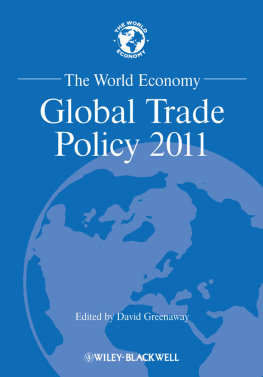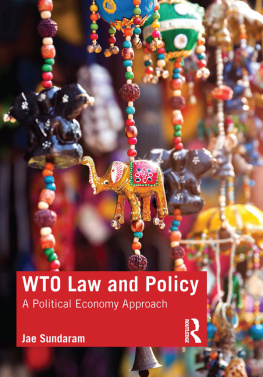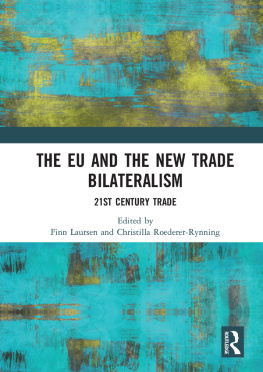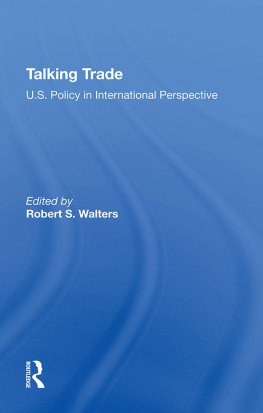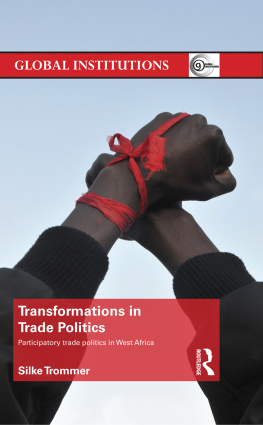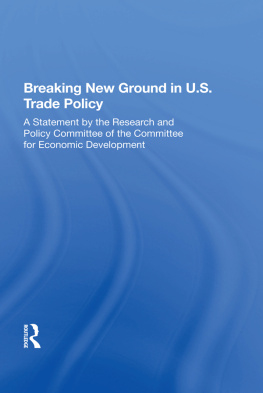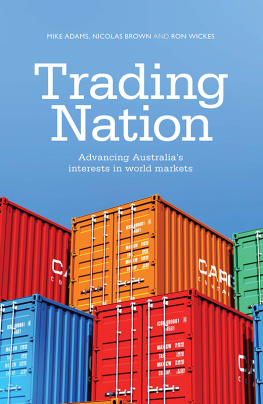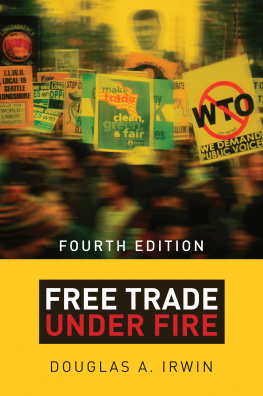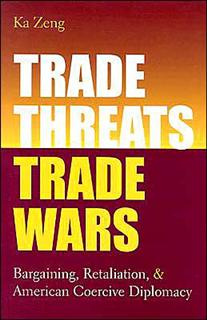
This edition first published 2013
Originally published as Volume 34, Issue 12 of The World Economy
Chapters 2013 The Authors
Editorial organization 2013 Blackwell Publishing Ltd
Blackwell Publishing was acquired by John Wiley & Sons in February 2007. Blackwells publishing program has been merged with Wileys global Scientific, Technical, and Medical business to form Wiley-Blackwell.
Registered Office
John Wiley & Sons Ltd, The Atrium, Southern Gate, Chichester, West Sussex, PO19 8SQ, United Kingdom
Editorial Offices
350 Main Street, Malden, MA 02148-5020, USA
9600 Garsington Road, Oxford, OX4 2DQ, UK
The Atrium, Southern Gate, Chichester, West Sussex, PO19 8SQ, UK
For details of our global editorial offices, for customer services, and for information about how to apply for permission to reuse the copyright material in this book please see our website at www.wiley.com/wiley-blackwell.
The right of David Greenaway to be identified as the author of the editorial material in this work has been asserted in accordance with the UK Copyright, Designs and Patents Act 1988.
All rights reserved. No part of this publication may be reproduced, stored in a retrieval system, or transmitted, in any form or by any means, electronic, mechanical, photocopying, recording or otherwise, except as permitted by the UK Copyright, Designs and Patents Act 1988, without the prior permission of the publisher.
Wiley also publishes its books in a variety of electronic formats. Some content that appears in print may not be available in electronic books.
Designations used by companies to distinguish their products are often claimed as trademarks. All brand names and product names used in this book are trade names, service marks, trademarks or registered trademarks of their respective owners. The publisher is not associated with any product or vendor mentioned in this book. This publication is designed to provide accurate and authoritative information in regard to the subject matter covered. It is sold on the understanding that the publisher is not engaged in rendering professional services. If professional advice or other expert assistance is required, the services of a competent professional should be sought.
Library of Congress Cataloging-in-Publication Data
9781444367003 (paperback)
A catalogue record for this book is available from the British Library.
Cover design by Workhaus.
Notes on Contributors
| Chad P. Bown | World Bank, Washington, DC |
| Maurizio Bussolo | World Bank, Washington, DC |
| Rafael De Hoyos | World Bank, Washington, DC |
| Camilla Jensen | University of Nottingham, Semenyih |
| Nasra Kara | Open University of Tanzania |
| Jai S. Mah | Ewha Womans University, Seoul |
| Denis Medvedev | World Bank, Washington, DC |
| John Alexander Nuetah | China Agricultural University, Beijing |
| Xin Xian | China Agricultural University, Beijing |
| Xianguo Yao | Zhejiang University, Hangzhou, China |
| Minghai Zhou | Zhejiang University, Hangzhou, China |
| Ting Zuo | China Agricultural University, Beijing |
Trade Policy Review Malaysia 2010
Camilla Jensen and Nasra Kara
1. INTRODUCTION
THE objective with this article is to give an academic analysis and assessment of the trade policy situation facing Malaysia. The starting point for the article is the recently completed WTO Trade Policy Review (WTO, 2010a).
Trade Policy Reviews are conducted on a regular basis for all WTO member countries and applicant countries. Malaysia became a member of the WTO on 1 January, 1995. The first review for Malaysia was conducted in 1993, the last in 2005 (Ramasamy and Yeung, 2007). The present review covers the subsequent five-year period 200510. The objective with the Trade Policy Review Mechanism launched back in 1988 is to enhance transparency in the area of trade policy by giving an objective overall assessment of the standing of each countrys trade policy regime on a recurring basis vis--vis WTO objectives of achieving global free trade (WTO, 2010b).
The article is organised as follows. We start with an introductory note to the Malaysian context of economic policy. Then, in Section 3, we give a general analysis and overview of Malaysias trading regime. A main theme of this section is the ambiguity of Malaysias development situation. It is argued that several of the dual economy features may be reinforced by present trade-related policies. Despite this Malaysia has diversified her export base since independence. This is a major strength and adds an important element of flexibility in terms of future avenues for specialisation. In the remainder of the paper, we explore three of the areas that are treated as potential strengths or weaknesses of Malaysias present trade and development policies by the WTO in the most recent Trade Policy Review document to demonstrate this point.
In Section 4, foreign direct investment policies are reviewed. We discuss whether the present policies and recent changes in the investment regime have been able to recast the structure of costs and benefits of hosting FDI in Malaysia. Section 5 takes a focus on a particular priority sector for Malaysia, which is tourism. We discuss whether policies to promote tourism are wholehearted. What has Malaysia done to bridge dual structures in this sector? We discuss how the Malaysian government has been quite successful in approaching tourism combining a well-designed public policy framework with the dynamic mindset of private entrepreneurs. Section 6 focuses on Malaysias external and regional trade partners and the combined challenges of competing in the Asian region under rapidly changing conditions. A short conclusion follows in Section 7.
2. AN INTRODUCTION TO MALAYSIAN ECONOMY AND POLITICS
To understand Malaysias economy, a few points about the country have to be borne in mind. Malaysia is a very young nation having only recently embarked on the process of nation building. Prior to the establishment of the union of the Malaysian states (which includes the 11 states of Johor, Kedah, Kelantan, Malacca, Negeri Sembilan, Pahang, Perak, Perlis, Penang, Selangor and Terengganu on the Malaysian peninsula or what is called West Malaysia, the states of Sabah and Sarawak on the island of Borneo or what is called East Malaysia and the three federal territories of Kuala Lumpur, Labuan and Putrajaya), the area that today constitutes Malaysia has been under influence of several outside invading and/or trading nations. In terms of institutions, probably the British left the largest imprint because of the adoption of the Common Law system. However, this system of laws is not being adopted without challenge from other competing systems and influences. Historically, Malaysia has been under the influence of the Muslim world for the longest period in classical and modern times. This has left a colossal imprint on Malaysian culture and traditions. Minor influences are also seen from short periods of European settlements and from a short period of communist rule.
All these influences have left an economic system that can best be described as a mlange of what is today mainly a free market economy combined with a mix of oligarchic style and state ownership. Furthermore, the ethnic makeup of Malaysia also de facto means a large influence from major settlers groups from Asia especially China and India which are estimated to make up 30 and 10 per cent respectively of the population. Malaysia also continues to be a popular destination for settlers and international workers from around the Muslim world since it is one of the economically freest Muslim countries in the world (Miller and Holmes, 2011). Indigenous Malay people are estimated alone to constitute around half of the total population. The protection of the rightful interests of the Malay people in the midst of all these outside pressures from what we could think of as ongoing globalisation has been an important factor towards informing economic policies in Malaysia since the 1970s and until today.
Next page
